List of Hand Tracking Tech for VR
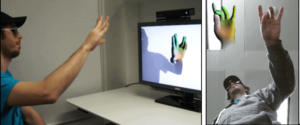
Virtual reality promises a lot of futuristic opportunities to everything we do in our lives – in computing, gaming, and entertainment, among other things. Many companies who already gave us a taste of the future in the form of the odd-looking virtual reality headsets are still pushing the envelope to make the VR experience even better. One thing that present virtual reality technology lacks is a comprehensive hand tracking technology to further enhance VR experiences.
Hand tracking, in general, is a complex and abstract aspect of artificial intelligence that makes use of numerous algorithms and the principles of mathematics and physical sciences to bring real-time interpretation of hand movements, gathered as data and processed into tangible user input. It has been a part of an extensive and lengthy researching efforts of many individuals, especially physicists and scientists, in the past few decades when the computer era boomed alongside the discovery of artificial intelligence and the birth of virtual reality. Back then, hand tracking is a novel technology only dreamt of by many. Just like virtual reality, it is a futuristic concept that had a niche audience – only a selected few had the opportunity to interact with the first-generation technology.
With the boom of virtual reality today, haptics technology such as hand tracking is increasingly becoming adopted to work in parallel with VR and AR applications. To realistically simulate the real world, virtual reality had to step up hugely by introducing tactile feedback to the visual aspect of VR. Several people in the academe had already done extensive efforts in making haptics technology an integral part of virtual reality as well. One of the notable examples is the research done by the University of Tokyo, where they have developed three-dimensional holograms that give off tangible feedback using acoustic radiation that is being perceived as a pressure difference by the user’s hands.
Many startups and companies who took time in providing the first-hand experience of haptics alongside virtual reality have come up with innovative products that are worn by the user. These physical objects are what give the feeling of realism by introducing sensations felt by the user along with the visual realism brought by virtual reality headsets. The following products that are in constant development have been introduced publicly and promises to integrate true hands-enabled input with VR.
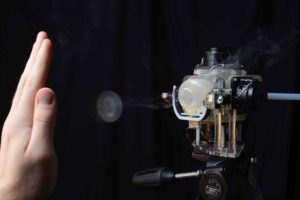 Aireal
Aireal
Aireal is a haptics technology co-developed by Rajinder Sodhi from the University of Illinois and Ivan Poupyrev from Disney Research. It aims to bring haptic feedback by pulsing out short bursts of air rings – these tiny puffs of air can be felt as textures of any virtual reality content based on the user’s interactions. Aireal is a system made of five modules that can be attached to any source, including computers and virtual reality headsets, and is positioned around the user. As the user moves, the modules track movement and provide haptic feedback by sending out bursts of air that form vortices. These vortices are what rings of air are made of, and these are felt by the user as haptic feedback.
http://rsodhi.com/?portfolio=aireal-interactive-tactile-experiences-in-free-air
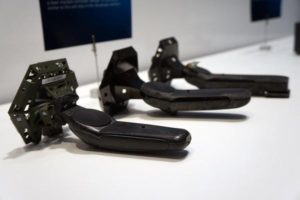 HTC Vive
HTC Vive
HTC and Valve worked together to bring the Vive, a virtual reality headset designed with SteamVR in mind. It’s not just only a VR headgear, it also comes with two wireless controllers that act as the virtual “arms” to track hand and arm movements in space in real time. As of now, the Vive is still being developed, and once the consumer-ready version is announced, these two haptic wireless controllers will be bundled as well.
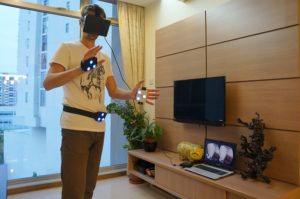 iMotion
iMotion
Created by a California-based startup Intellect Motion, iMotion is a motion controller that creates haptic feedback by hand-and-arm interactions through a “virtual touchscreen”. The iMotion controller provides pinpoint accuracy in three-dimensional space by utilizing a device’s camera, such as those found in smartphones, tablets, gaming consoles, and PCs. By installing a support software on a compatible device, the iMotion turns the user’s hands into the controller of the on-screen objects in games, VR experiences, and even in the simple navigation of a device’s homescreen. Intellect Motion provides an SDK for third-party developers in integrating the iMotion technology into the virtual reality headsets such as the Oculus Rift. This haptic technology is still in development, with its first usage entry into mainstream devices such as smartphones, tablets, and PCs and Macs.
https://www.kickstarter.com/projects/576456616/imotion-3d-motion-controller-with-haptic-feedback
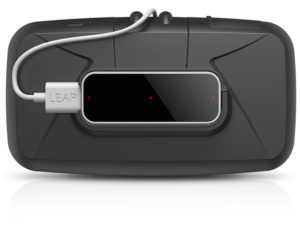 Leap Motion
Leap Motion
Leap Motion, a company specializing in haptics technology, is developing a true handsfree solution specifically designed for virtual reality. The Leap Motion for Virtual Reality Mount is a camera that is mounted onto VR headsets to give accurate depth tracking and motion sensing to enhance VR experiences by turning the user’s hands as the sole controller of anything on screen. Having a wide field of view of 135 degrees, almost-zero latency, pinpoint accuracy, and high robustness, the Leap Motion mount designed for VR is truly the next generation of haptics technology for virtual reality applications. It is still in beta stage, meaning its development is in progress. Some compatible VR devices for the mount are the Oculus Rift Development Kits 1 and 2.
Microsoft Handpose
Developed by Microsoft, Handpose is a cutting-edge hand tracking technology that uses the Kinect motion-sensing camera to detect articulated hand movements in space in real time. What sets apart Handpose from other haptics technology in development is its high degree of robustness in tracking errors, and its fast data processing compensates for these possible errors. Thanks to its utilization of the Kinect camera, it can track hand movements within the camera’s range of view or focus, whether the hand is far or near the camera. The Handpose is currently in development stage, with the Xbox One’s advanced Kinect camera being used as a prototype device for this haptics technology.
http://research.microsoft.com/en-us/projects/handpose/
MindLeap
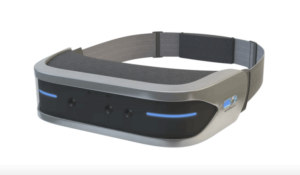 During the recent Game Developers Conference in San Francisco, Swiss neurotechnology company MindMaze unveiled its one-of-a-kind technology that benefits virtual reality. It’s called the MindLeap, which is a technology that reads neural signals – it reads the user’s mind – to perform certain tasks. Not only the MindLeap is able to use the user’s brainpower, it can also track hand movements using advanced tracking sensors. Primarily, the MindLeap tech was based off the company’s proprietary technology in its application in the medical field. With the boom of virtual and augmented reality, MindMaze took the effort to bring its haptics technology in the VR arena. It is still in continuous development as the MindLeap technology is being offered as an SDK for third-party developers to enhance certain experiences such as in gaming and VR.
During the recent Game Developers Conference in San Francisco, Swiss neurotechnology company MindMaze unveiled its one-of-a-kind technology that benefits virtual reality. It’s called the MindLeap, which is a technology that reads neural signals – it reads the user’s mind – to perform certain tasks. Not only the MindLeap is able to use the user’s brainpower, it can also track hand movements using advanced tracking sensors. Primarily, the MindLeap tech was based off the company’s proprietary technology in its application in the medical field. With the boom of virtual and augmented reality, MindMaze took the effort to bring its haptics technology in the VR arena. It is still in continuous development as the MindLeap technology is being offered as an SDK for third-party developers to enhance certain experiences such as in gaming and VR.
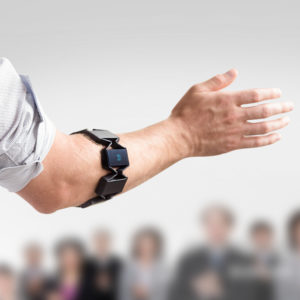 Myo
Myo
Developed by Thalmic Labs, The Myo is an armband worn by the user to be used as an interaction device for many practical applications. By using electrical signals in the user’s muscles, Myo can interpret these signals as perceived input and uses it to trigger certain on-screen functions in a variety of interfaces. It is versatile such that it can be used to control computers, smartphones, and tablets. Myo is purely wireless, powered by Bluetooth to connect to third-party devices. As of now, it is currently on sale but the technology is currently being developed to work with other tech devices in the near future, including gaming consoles and VR gear.
Nimble Sense
Nimble Sense is a hand tracking technology developed by startup Nimble VR. It is actually a camera designed to sense depth and use the data to track hand movement with a high level of accuracy and precision. It is suited as an accessory to the Oculus Rift VR headset, as it perfectly sits on top of the headset. With a low latency, it accurately tracks hand input using both a photonic mixer device and an eye-safe laser that effectively senses the location of the user’s hands in space in real time. An API makes this gathered data interpreted into input that translates to manipulations and interactions in the virtual reality interface.
http://nimblevr.com
https://www.kickstarter.com/projects/nimblevr/nimble-sense-bring-your-hands-into-virtual-reality
Ultrahaptics
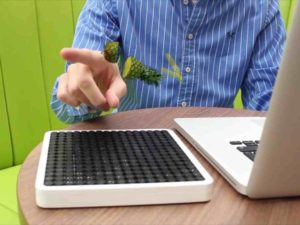 Ultrahaptics is a company based in Bristol, United Kingdom, which specializes in the development of a tactile gesture-based haptic feedback that can be applied in various platforms, including virtual reality. They have developed a system to deliver haptic feedback through the use of ultrasonic waves, creating what they call as “haptic holograms”. The technology allows the user to feel tactile feedback in mid-air, and the use of ultrasound speakers makes for a soundless, invisible haptic feedback. Thanks to ultrasonic waves, it can replicate various complex object textures such as the textures of wood, metal, and even water. As of now, Ultrahaptics’ technology is being developed for smaller speaker prototypes, enabling future integration into smartphones and tablets, as well as being a future replacement for the traditional remote control for many tech devices, such as televisions and consoles.
Ultrahaptics is a company based in Bristol, United Kingdom, which specializes in the development of a tactile gesture-based haptic feedback that can be applied in various platforms, including virtual reality. They have developed a system to deliver haptic feedback through the use of ultrasonic waves, creating what they call as “haptic holograms”. The technology allows the user to feel tactile feedback in mid-air, and the use of ultrasound speakers makes for a soundless, invisible haptic feedback. Thanks to ultrasonic waves, it can replicate various complex object textures such as the textures of wood, metal, and even water. As of now, Ultrahaptics’ technology is being developed for smaller speaker prototypes, enabling future integration into smartphones and tablets, as well as being a future replacement for the traditional remote control for many tech devices, such as televisions and consoles.
The future of real-time, integrated hand input with virtual reality is looking bright as of now. But Oculus VR CEO Palmer Lucky gave thoughts on this phenomenon in VR. Palmer said in a Oculus subreddit pertaining to possible VR input, “VR input is hard – in some ways, tracking hands well enough to maintain a sense of proprioceptive presence is even more technically challenging than getting perfect head tracking.” Despite his statements on VR input, his company, Oculus VR, has recently acquired Nimble VR and all of its proprietary hand-tracking technologies. This acquisition is part of Oculus’ efforts to tightly integrate real-time haptics with its cutting-edge virtual reality technology to deliver the richest, most immersive VR experiences possible.
Luckily, hand tracking technology in virtual reality has room to grow, and with increasing growth of the VR industry, this amazing tech in VR is never far from (virtual) reality. We all have to admit, virtual reality is more cool paired with some realism. Our hands are the keys to the portal of VR and realism – the key to unlocking even more realistic experiences in the virtual world.
For more information on these hand-tracking technologies, please visit the following websites:
http://en.wikipedia.org/wiki/Haptic_technology
http://www.immersion.com/haptics-technology/what-is-haptics/
http://www.isfh.org/haptics.html


